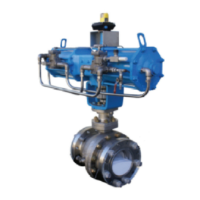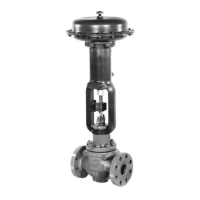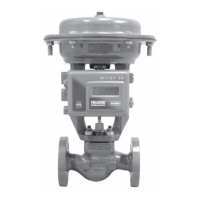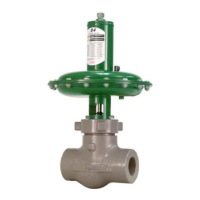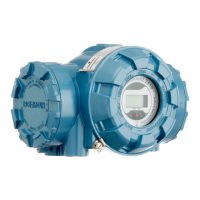15
CLARKSON SLURRY KNIFE GATE VALVES
KGA+
For gate and or secondary seal replacement,
smaller valves may have the actuator frame
swung out of the way as illustrated here.
Remove frame bolts on one side only and
loosen the opposite side just enough to allow
movement. Be sure and properly support
weight of actuator assembly, taking care to
avoid injury.
12 FIELD REPLACEMENT OF GATES
Disassembly
1. Replacement of the gate can be
accomplished without having to remove
the valve from service. However, if it is
suspected that either one or both of the
elastomer sleeves have failed, the valve
should be removed from service before
gatereplacement. If valve is to be removed,
refer to Lifting, Section 15.
CAUTION
Since this procedure may be performed with the
valve in an active pipeline, plant standard safety
procedures must be followed. use of personal
protective equipment, tag out or other plant
standard safety procedures must be followed.
Procedure CANNOT be done with valve in closed
position. If valve is removed for this service,
assure line is not pressurized before removing
valve. Valve assembly and parts may be heavy,
use proper lifting and support techniques, refer
toLifting, Section 15.
2. Open the valve, so the gate is in the fully
raised position.
3. Remove the cotter pin and clevis pin from
the gate. It may be necessary to actuate
the valve down slightly in order to relieve
pressure on the clevis pin to facilitate
removal.
4. Actuator assembly removal:
Smaller valves: remove the frame to
housing bolts of one side except for the
lowest bolt on the opposite side of the
frame. This bolt will act as a pivot point for
the frame / actuator assembly. Pivot the
frame / actuator assembly away from the
valve and temporarily support.
Larger valves: remove the frame to housing
bolts. Lift the frame and actuator assembly
off the housing assembly to allow gate
removal.
5. Loosen the secondary seal retainer plate
bolts.
6. Remove the gate by lifting it out of the
secondary seal.
Reassembly
1. Apply a small amount of recommended
lubricant to the two tapered faces of the
‘sharp end’ of the gate.
2. Press the gate firmly through the secondary
seal into the valve housing assembly until
the gate beveled edge reaches the sleeve
bore I.D.
3. Fully tighten all the retainer fasteners.
4. Reinstall the actuator / frame assembly
withthe housing / frame fasteners loosely.
5. Reconnect the gate to the actuator. (In order
to facilitate installation and future removal,
a coating or anti-seize compound should be
applied to the outside of the clevis pin over
the yoke contact area.)
6. ‘Stretch’ the frame / actuator assembly
with respect to the housing by pulling (not
lifting) the frame / actuator assembly to
its maximum movement away from the
housing assembly (holding housing in place
if valve is removed from pipeline). Tighten
the frame/ housing bolts and verify the
tightness of the actuator to frame bolts.
7. Cycle valve to full open position and check
the gate position using the data in the
Table5, Figure 13. Adjust as required.
8. Rattle the gate. It should be mostly
disengaged from the sleeves. The outboard
edges of the gate should be free and the
center still partially engaged in between
thesleeves.
9. Cycle gate full closed and full open.
FIGURE 14
Visual inspection of parts prior to reassembly
1. Examine secondary seal for signs of wear
or cracking, severe abrasion or chemical
attack (softening or gumming). Replace if
indoubt.
2. Inspect the gate for sharp edges or
excessive damage. Some scoring will
occur in normal use. If the gate has been
bent beyond
1
/
16” (1.5 mm) permanent
deflection at the center, straighten or
replace. If straightening is performed,
use considerable care to minimize marks
on gate surface. Scores or other distress
marks may be cleaned up with a belt
sander. Machining the gate surface is not
recommended. Light scale buildup may
be removed with a putty knife or gasket
scraper. Inspect the gate for wear and
roughness. Use a disc grinder or belt sander
to remove rough surfaces. Take particular
care on the leading and beveled edge to
remove burrs and other sharp edges.
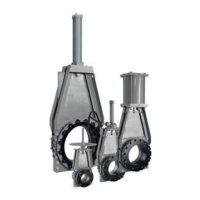
